-
EXECUTIVE SUMMARY
-
MARKET INTRODUCTION
-
Definition
-
Scope of the Study
- Research Objective
- Assumptions
- Limitations
-
RESEARCH METHODOLOGY
-
Overview
-
Data Mining
-
Secondary Research
-
Primary Research
- Primary Interviews and Information Gathering Process
- Breakdown of Primary Respondents
-
Forecasting Modality
-
Market Size Estimation
- Bottom-Up Approach
- Top-Down Approach
-
Data Triangulation
-
Validation
-
MARKET DYNAMICS
-
Overview
-
Drivers
- Rising prevalence of acute agitation and aggression
- Increase in focus on creating awareness about agitation and aggression
-
Restraints
- Social stigma associated with mental illness
-
Opportunities
-
MARKET FACTOR ANALYSIS
-
Value Chain Analysis
-
Porter’s Five Forces Analysis
- Bargaining Power of Suppliers
- Bargaining Power of Buyers
- Threat of New Entrants
- Threat of Substitutes
- Intensity of Rivalry
-
COVID-19 Impact Analysis
- Market Impact Analysis
- Regional Impact
- Opportunity and Threat Analysis
-
GLOBAL ACUTE AGITATION AND AGGRESSION TREATMENT MARKET, BY DRUG CLASS
-
Overview
-
First-Generation Anti-Psychotics
-
Second-Generation Anti-Psychotics
-
Benzodiazepines
-
Others
-
GLOBAL ACUTE AGITATION AND AGGRESSION TREATMENT MARKET, BY ROUTE OF ADMINISTRATION
-
Overview
-
Oral
-
Intramuscular
-
Others
-
GLOBAL ACUTE AGITATION AND AGGRESSION TREATMENT MARKET, BY INDICATION
-
Overview
-
Schizophrenia
-
Dementia
-
Bipolar Disorder
-
Depression
-
Drug-induced Agitation and Aggression
-
Alcohol Withdrawal
-
Others
-
GLOBAL ACUTE AGITATION AND AGGRESSION TREATMENT MARKET, BY END USER
-
Overview
-
Hospitals & Clinics
-
Psychiatric Care Facilities
-
Others
-
GLOBAL ACUTE AGITATION AND AGGRESSION TREATMENT MARKET, BY REGION
-
Overview
-
North America
- US
- Canada
-
Europe
- Germany
- France
- UK
- Italy
- Spain
- Rest of Europe
-
Asia-Pacific
- China
- India
- Japan
- South Korea
- Australia
- Rest of Asia-Pacific
-
Rest of the World
- Middle East
- Africa
- Latin America
-
COMPETITIVE LANDSCAPE
-
Overview
-
Competitive Analysis
-
Market Share Analysis
-
Major Growth Strategy in the Global Acute Agitation and Aggression Treatment Market,
-
Competitive Benchmarking
-
Leading Players in Terms of Number of Developments in the Global Acute Agitation and Aggression Treatment Market,
-
Key developments and Growth Strategies
- New Product Launch/Service Deployment
- Merger & Acquisitions
- Joint Ventures
-
Major Players Financial Matrix
- Sales & Operating Income, 2022
- Major Players R&D Expenditure. 2022
-
COMPANY PROFILES
-
Eli Lilly and Company
- Company Overview
- Financial Overview
- Products Offered
- Key Developments
- SWOT Analysis
- Key Strategies
-
Pfizer Inc
- Company Overview
- Financial Overview
- Products Offered
- Key Developments
- SWOT Analysis
- Key Strategies
-
GlaxoSmithKline plc
- Company Overview
- Financial Overview
- Products Offered
- Key Developments
- SWOT Analysis
- Key Strategies
-
Teva Pharmaceutical Industries Ltd
- Company Overview
- Financial Overview
- Products Offered
- Key Developments
- SWOT Analysis
- Key Strategies
-
Otsuka Holdings Co., Ltd
- Company Overview
- Financial Overview
- Products Offered
- Key Developments
- SWOT Analysis
- Key Strategies
-
VIATRIS INC
- Company Overview
- Financial Overview
- Products Offered
- Key Developments
- SWOT Analysis
- Key Strategies
-
Johnson & Johnson Services, Inc
- Company Overview
- Financial Overview
- Products Offered
- Key Developments
- SWOT Analysis
- Key Strategies
-
Novartis AG
- Company Overview
- Financial Overview
- Products Offered
- Key Developments
- SWOT Analysis
- Key Strategies
-
H. Lundbeck A/S
- Company Overview
- Financial Overview
- Products Offered
- Key Developments
- SWOT Analysis
- Key Strategies
-
Amneal Pharmaceuticals LLC
- Company Overview
- Financial Overview
- Products Offered
- Key Developments
- SWOT Analysis
- Key Strategies
-
APPENDIX
-
References
-
Related Reports
-
-
LIST OF TABLES
-
GLOBAL ACUTE AGITATION AND AGGRESSION TREATMENT MARKET, SYNOPSIS, 2019–2032
-
GLOBAL ACUTE AGITATION AND AGGRESSION TREATMENT MARKET, ESTIMATES & FORECAST, 2019–2032 (USD MILLION)
-
GLOBAL ACUTE AGITATION AND AGGRESSION TREATMENT MARKET, BY DRUG CLASS, 2019–2032 (USD MILLION)
-
GLOBAL ACUTE AGITATION AND AGGRESSION TREATMENT MARKET, BY ROUTE OF ADMINISTRATION, 2019–2032 (USD MILLION)
-
GLOBAL ACUTE AGITATION AND AGGRESSION TREATMENT MARKET, BY INDICATION, 2019–2032 (USD MILLION)
-
GLOBAL ACUTE AGITATION AND AGGRESSION TREATMENT MARKET, BY END USER, 2019–2032 (USD MILLION)
-
NORTH AMERICA: ACUTE AGITATION AND AGGRESSION TREATMENT MARKET, BY DRUG CLASS, 2019–2032 (USD MILLION)
-
NORTH AMERICA: ACUTE AGITATION AND AGGRESSION TREATMENT MARKET, BY ROUTE OF ADMINISTRATION, 2019–2032 (USD MILLION)
-
NORTH AMERICA: ACUTE AGITATION AND AGGRESSION TREATMENT MARKET, BY INDICATION, 2019–2032 (USD MILLION)
-
NORTH AMERICA: ACUTE AGITATION AND AGGRESSION TREATMENT MARKET, BY END USER, 2019–2032 (USD MILLION)
-
US: ACUTE AGITATION AND AGGRESSION TREATMENT MARKET, BY DRUG CLASS, 2019–2032 (USD MILLION)
-
US: ACUTE AGITATION AND AGGRESSION TREATMENT MARKET, BY ROUTE OF ADMINISTRATION, 2019–2032 (USD MILLION)
-
US: ACUTE AGITATION AND AGGRESSION TREATMENT MARKET, BY INDICATION, 2019–2032 (USD MILLION)
-
US: ACUTE AGITATION AND AGGRESSION TREATMENT MARKET, BY END USER, 2019–2032 (USD MILLION)
-
CANADA: ACUTE AGITATION AND AGGRESSION TREATMENT MARKET, BY DRUG CLASS, 2019–2032 (USD MILLION)
-
CANADA: ACUTE AGITATION AND AGGRESSION TREATMENT MARKET, BY ROUTE OF ADMINISTRATION, 2019–2032 (USD MILLION)
-
CANADA: ACUTE AGITATION AND AGGRESSION TREATMENT MARKET, BY INDICATION, 2019–2032 (USD MILLION)
-
CANADA: ACUTE AGITATION AND AGGRESSION TREATMENT MARKET, BY END USER, 2019–2032 (USD MILLION)
-
EUROPE: ACUTE AGITATION AND AGGRESSION TREATMENT MARKET, BY DRUG CLASS, 2019–2032 (USD MILLION)
-
EUROPE: ACUTE AGITATION AND AGGRESSION TREATMENT MARKET, BY ROUTE OF ADMINISTRATION, 2019–2032 (USD MILLION)
-
EUROPE: ACUTE AGITATION AND AGGRESSION TREATMENT MARKET, BY INDICATION, 2019–2032 (USD MILLION)
-
EUROPE: ACUTE AGITATION AND AGGRESSION TREATMENT MARKET, BY END USER, 2019–2032 (USD MILLION)
-
GERMANY: ACUTE AGITATION AND AGGRESSION TREATMENT MARKET, BY DRUG CLASS, 2019–2032 (USD MILLION)
-
GERMANY: ACUTE AGITATION AND AGGRESSION TREATMENT MARKET, BY ROUTE OF ADMINISTRATION, 2019–2032 (USD MILLION)
-
GERMANY: ACUTE AGITATION AND AGGRESSION TREATMENT MARKET, BY INDICATION, 2019–2032 (USD MILLION)
-
GERMANY: ACUTE AGITATION AND AGGRESSION TREATMENT MARKET, BY END USER, 2019–2032 (USD MILLION)
-
FRANCE: ACUTE AGITATION AND AGGRESSION TREATMENT MARKET, BY DRUG CLASS, 2019–2032 (USD MILLION)
-
FRANCE: ACUTE AGITATION AND AGGRESSION TREATMENT MARKET, BY ROUTE OF ADMINISTRATION, 2019–2032 (USD MILLION)
-
FRANCE: ACUTE AGITATION AND AGGRESSION TREATMENT MARKET, BY INDICATION, 2019–2032 (USD MILLION)
-
FRANCE: ACUTE AGITATION AND AGGRESSION TREATMENT MARKET, BY END USER, 2019–2032 (USD MILLION)
-
ITALY: ACUTE AGITATION AND AGGRESSION TREATMENT MARKET, BY DRUG CLASS, 2019–2032 (USD MILLION)
-
ITALY: ACUTE AGITATION AND AGGRESSION TREATMENT MARKET, BY ROUTE OF ADMINISTRATION, 2019–2032 (USD MILLION)
-
ITALY: ACUTE AGITATION AND AGGRESSION TREATMENT MARKET, BY INDICATION, 2019–2032 (USD MILLION)
-
ITALY: ACUTE AGITATION AND AGGRESSION TREATMENT MARKET, BY END USER, 2019–2032 (USD MILLION)
-
SPAIN: ACUTE AGITATION AND AGGRESSION TREATMENT MARKET, BY DRUG CLASS, 2019–2032 (USD MILLION)
-
SPAIN: ACUTE AGITATION AND AGGRESSION TREATMENT MARKET, BY INDICATION, 2019–2032 (USD MILLION)
-
SPAIN: ACUTE AGITATION AND AGGRESSION TREATMENT MARKET, BY ROUTE OF ADMINISTRATION, 2019–2032 (USD MILLION)
-
SPAIN: ACUTE AGITATION AND AGGRESSION TREATMENT MARKET, BY END USER, 2019–2032 (USD MILLION)
-
UK: ACUTE AGITATION AND AGGRESSION TREATMENT MARKET, BY DRUG CLASS, 2019–2032 (USD MILLION)
-
UK: ACUTE AGITATION AND AGGRESSION TREATMENT MARKET, BY ROUTE OF ADMINISTRATION, 2019–2032 (USD MILLION)
-
UK: ACUTE AGITATION AND AGGRESSION TREATMENT MARKET, BY INDICATION, 2019–2032 (USD MILLION)
-
UK: ACUTE AGITATION AND AGGRESSION TREATMENT MARKET, BY END UER, 2019–2032 (USD MILLION)
-
REST OF EUROPE: ACUTE AGITATION AND AGGRESSION TREATMENT MARKET, BY DRUG CLASS, 2019–2032 (USD MILLION)
-
REST OF EUROPE: ACUTE AGITATION AND AGGRESSION TREATMENT MARKET, BY ROUTE OF ADMINISTRATION, 2019–2032 (USD MILLION)
-
REST OF EUROPE: ACUTE AGITATION AND AGGRESSION TREATMENT MARKET, BY INDICATION, 2019–2032 (USD MILLION)
-
REST OF EUROPE: ACUTE AGITATION AND AGGRESSION TREATMENT MARKET, BY END USER, 2019–2032 (USD MILLION)
-
ASIA-PACIFIC: ACUTE AGITATION AND AGGRESSION TREATMENT MARKET, BY DRUG CLASS, 2019–2032 (USD MILLION)
-
ASIA-PACIFIC: ACUTE AGITATION AND AGGRESSION TREATMENT MARKET, BY ROUTE OF ADMINISTRATION, 2019–2032 (USD MILLION)
-
ASIA-PACIFIC: ACUTE AGITATION AND AGGRESSION TREATMENT MARKET, BY INDICATION, 2019–2032 (USD MILLION)
-
ASIA-PACIFIC: ACUTE AGITATION AND AGGRESSION TREATMENT MARKET, BY END USER, 2019–2032 (USD MILLION)
-
JAPAN: ACUTE AGITATION AND AGGRESSION TREATMENT MARKET, BY DRUG CLASS, 2019–2032 (USD MILLION)
-
JAPAN: ACUTE AGITATION AND AGGRESSION TREATMENT MARKET, BY ROUTE OF ADMINISTRATION, 2019–2032 (USD MILLION)
-
JAPAN: ACUTE AGITATION AND AGGRESSION TREATMENT MARKET, BY INDICATION, 2019–2032 (USD MILLION)
-
JAPAN: ACUTE AGITATION AND AGGRESSION TREATMENT MARKET, BY END USER, 2019–2032 (USD MILLION)
-
CHINA: ACUTE AGITATION AND AGGRESSION TREATMENT MARKET, BY DRUG CLASS, 2019–2032 (USD MILLION)
-
CHINA: ACUTE AGITATION AND AGGRESSION TREATMENT MARKET, BY ROUTE OF ADMINISTRATION, 2019–2032 (USD MILLION)
-
CHINA: ACUTE AGITATION AND AGGRESSION TREATMENT MARKET, BY INDICATION, 2019–2032 (USD MILLION)
-
CHINA: ACUTE AGITATION AND AGGRESSION TREATMENT MARKET, BY END USER, 2019–2032 (USD MILLION)
-
INDIA: ACUTE AGITATION AND AGGRESSION TREATMENT MARKET, BY DRUG CLASS, 2019–2032 (USD MILLION)
-
INDIA: ACUTE AGITATION AND AGGRESSION TREATMENT MARKET, BY ROUTE OF ADMINISTRATION, 2019–2032 (USD MILLION)
-
INDIA: ACUTE AGITATION AND AGGRESSION TREATMENT MARKET, BY INDICATION, 2019–2032 (USD MILLION)
-
INDIA: ACUTE AGITATION AND AGGRESSION TREATMENT MARKET, BY END USER, 2019–2032 (USD MILLION)
-
AUSTRALIA: ACUTE AGITATION AND AGGRESSION TREATMENT MARKET, BY DRUG CLASS, 2019–2032 (USD MILLION)
-
AUSTRALIA: ACUTE AGITATION AND AGGRESSION TREATMENT MARKET, BY ROUTE OF ADMINISTRATION, 2019–2032 (USD MILLION)
-
AUSTRALIA: ACUTE AGITATION AND AGGRESSION TREATMENT MARKET, BY INDICATION, 2019–2032 (USD MILLION)
-
AUSTRALIA: ACUTE AGITATION AND AGGRESSION TREATMENT MARKET, BY END USER, 2019–2032 (USD MILLION)
-
SOUTH KOREA: ACUTE AGITATION AND AGGRESSION TREATMENT MARKET, BY DRUG CLASS, 2019–2032 (USD MILLION)
-
SOUTH KOREA: ACUTE AGITATION AND AGGRESSION TREATMENT MARKET, BY ROUTE OF ADMINISTRATION, 2019–2032 (USD MILLION)
-
SOUTH KOREA: ACUTE AGITATION AND AGGRESSION TREATMENT MARKET, BY INDICATION, 2019–2032 (USD MILLION)
-
SOUTH KOREA: ACUTE AGITATION AND AGGRESSION TREATMENT MARKET, BY END USER, 2019–2032 (USD MILLION)
-
REST OF ASIA-PACIFIC: ACUTE AGITATION AND AGGRESSION TREATMENT MARKET, BY DRUG CLASS, 2019–2032 (USD MILLION)
-
REST OF ASIA-PACIFIC: ACUTE AGITATION AND AGGRESSION TREATMENT MARKET, BY ROUTE OF ADMINISTRATION, 2019–2032 (USD MILLION)
-
REST OF ASIA-PACIFIC: ACUTE AGITATION AND AGGRESSION TREATMENT MARKET, BY INDICATION, 2019–2032 (USD MILLION)
-
REST OF ASIA-PACIFIC: ACUTE AGITATION AND AGGRESSION TREATMENT MARKET, BY END USER, 2019–2032 (USD MILLION)
-
REST OF THE WORLD: ACUTE AGITATION AND AGGRESSION TREATMENT MARKET, BY DRUG CLASS, 2019–2032 (USD MILLION)
-
REST OF THE WORLD: ACUTE AGITATION AND AGGRESSION TREATMENT MARKET, BY ROUTE OF ADMINISTRATION, 2019–2032 (USD MILLION)
-
REST OF THE WORLD: ACUTE AGITATION AND AGGRESSION TREATMENT MARKET, BY INDICATION, 2019–2032 (USD MILLION)
-
REST OF THE WORLD: ACUTE AGITATION AND AGGRESSION TREATMENT MARKET, BY END USER, 2019–2032 (USD MILLION)
-
MIDDLE EAST: ACUTE AGITATION AND AGGRESSION TREATMENT MARKET, BY DRUG CLASS, 2019–2032 (USD MILLION)
-
MIDDLE EAST: ACUTE AGITATION AND AGGRESSION TREATMENT MARKET, BY ROUTE OF ADMINISTRATION, 2019–2032 (USD MILLION)
-
MIDDLE EAST: ACUTE AGITATION AND AGGRESSION TREATMENT MARKET, BY INDICATION, 2019–2032 (USD MILLION)
-
MIDDLE EAST: ACUTE AGITATION AND AGGRESSION TREATMENT MARKET, BY END USER, 2019–2032 (USD MILLION)
-
AFRICA: ACUTE AGITATION AND AGGRESSION TREATMENT MARKET, BY DRUG CLASS, 2019–2032 (USD MILLION)
-
AFRICA: ACUTE AGITATION AND AGGRESSION TREATMENT MARKET, BY ROUTE OF ADMINISTRATION, 2019–2032 (USD MILLION)
-
AFRICA: ACUTE AG

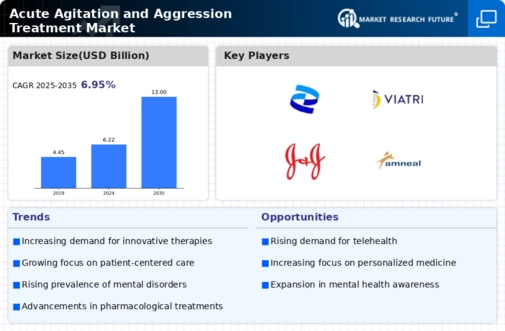
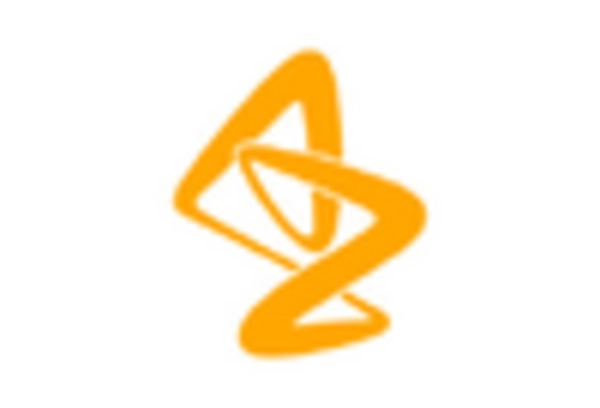
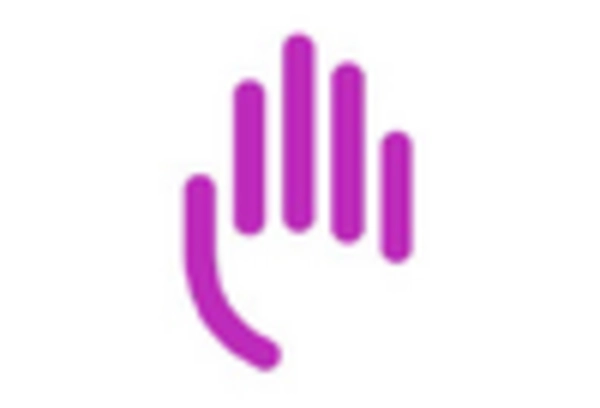
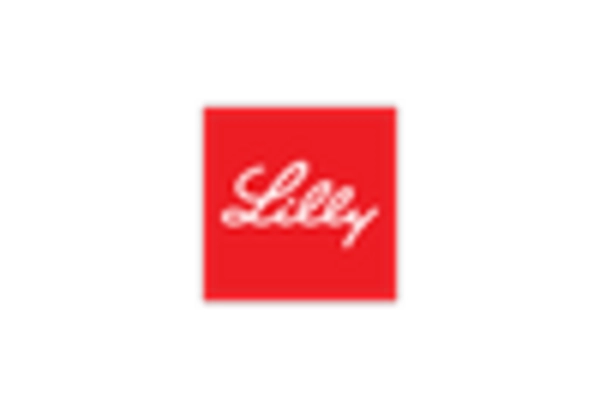

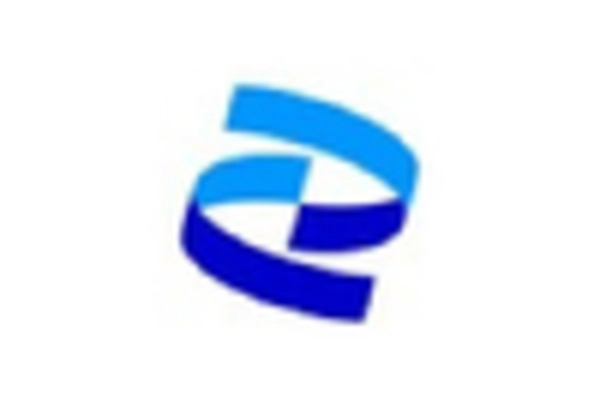
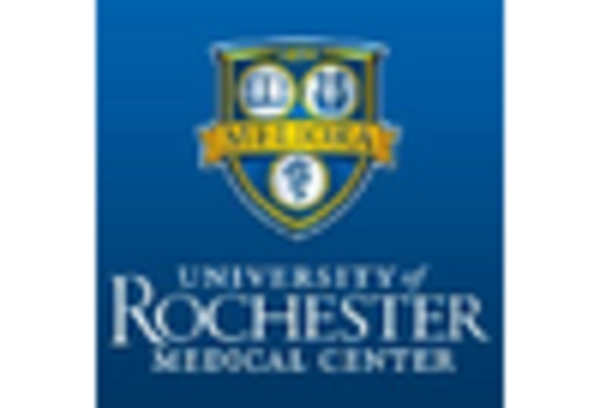









Leave a Comment